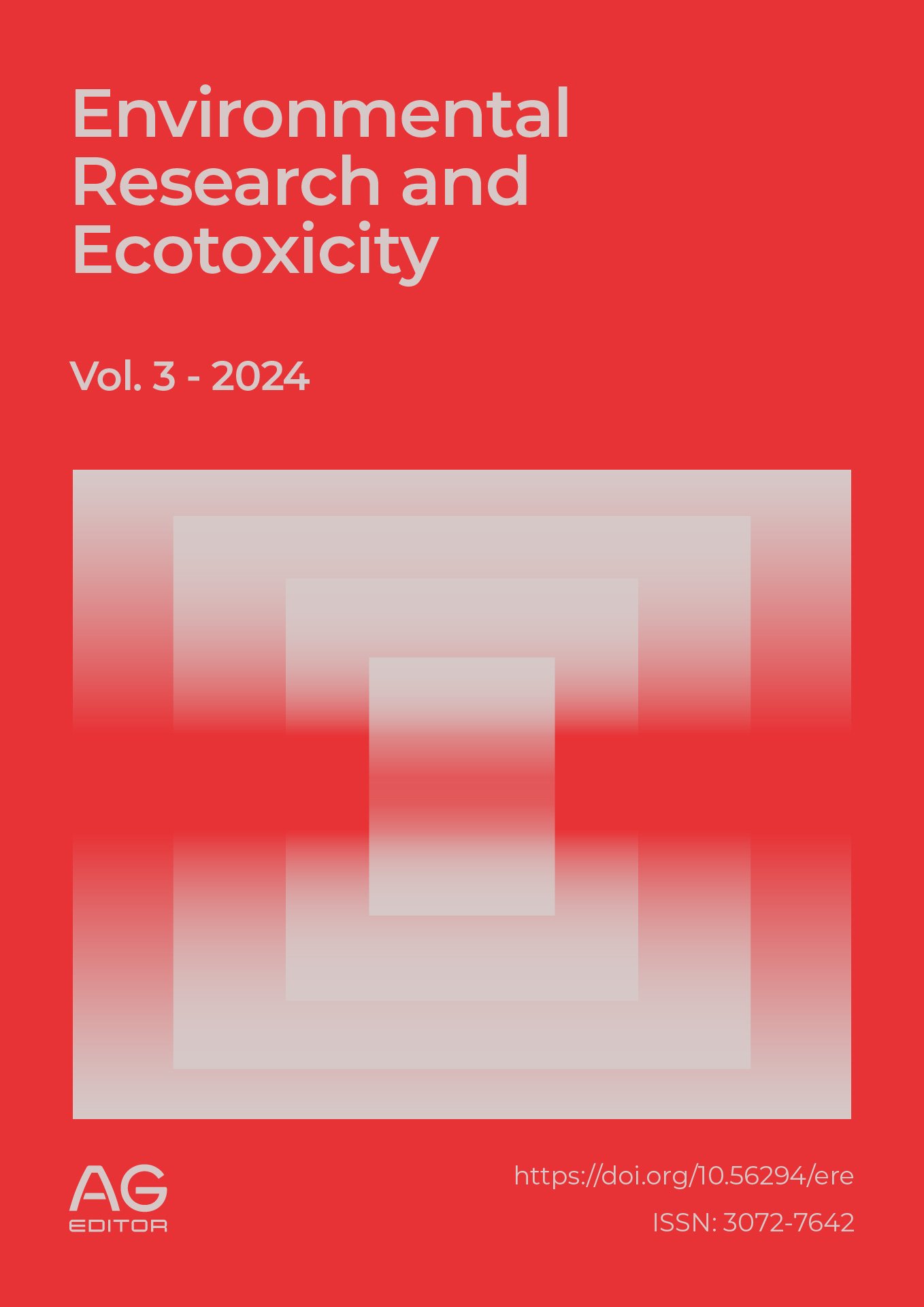Biophilic Architecture: A Holistic Approach to Healthy and Sustainable Spaces
DOI:
https://doi.org/10.56294/ere2024102Keywords:
Architecture, Biophilic architecture, Healthy spaces, Sustainable spacesAbstract
The article addresses biophilic architecture as a design approach that seeks to improve human well-being in built spaces through the integration of natural elements.
Objective of the Article
The main objective of the article is to analyze and synthesize the relationship between biophilic architecture and human well-being in built spaces, highlighting the importance of incorporating natural elements to promote better quality of life and user comfort.
Methodology: The methodology used in the article is a narrative review that analyzes the intellectual production on biophilic architecture from academic papers. International indexes such as ScienceDirect, Web Of Science and Scopus were searched using keywords related to biophilic architecture and its design. This methodology seeks to describe and qualitatively compare the findings of different relevant studies in the field.
Results: The results of the article highlight that the integration of natural elements has a positive impact on the emotional, cognitive and physiological well-being of users. Several studies reviewed demonstrate that biophilic architecture can reduce anxiety, improve cognitive performance and promote relaxation. Key features and findings from experimental studies validating these benefits were also presented.
Conclusions: Biophilic architecture is presented as a valuable approach that fuses nature with architectural design to improve human well-being. The authors emphasize that by incorporating natural elements into built spaces, the health and comfort of occupants can be improved. They also stress the need for further research and development of best practices in this field to maximize its impact, while also addressing challenges related to maintenance and additional costs.
References
1. Aguirre, M. M., Quispe, C. Y., & Ticsihua, L. C. (2021). Arquitectura biofílica aplicada en la propuesta de un centro de rehabilitación físico y mental postCOVID – región Huánuco 2021 [Universidad Continental]. https://hdl.handle.net/20.500.12394/11792
2. Espinoza-Sanhueza, C., Hébert, M., Lalonde, J. F., & Demers, C. M. (2024). Biophilic analogous patterns for light-responsive architecture during polar night: Examining the photobiological effects of electrical lighting on surface colour configuration. Building and Environment, 249(October 2023). https://doi.org/10.1016/j.buildenv.2023.111125
3. Jung, D., Kim, D. I., & Kim, N. (2023). Bringing nature into hospital architecture: Machine learning-based EEG analysis of the biophilia effect in virtual reality. Journal of Environmental Psychology, 89(May), 102033. https://doi.org/10.1016/j.jenvp.2023.102033
4. Latini, A., Torresin, S., Oberman, T., Di Giuseppe, E., Aletta, F., Kang, J., & D’Orazio, M. (2024). Virtual reality application to explore indoor soundscape and physiological responses to audio-visual biophilic design interventions: An experimental study in an office environment. Journal of Building Engineering, 87(February), 108947. https://doi.org/10.1016/j.jobe.2024.108947
5. Lorenzo Suruchaqui, K. C. (2020). Aplicación del diseño biofílico en los espacios de centros de atención para el adulto mayor en Villa El Salvador. Repositorio Institucional - UCV. https://doi.org/0000-0001-6394-4525
6. Macruz, A., Bueno, E., Sol, G., Vega, J., Palmieri, R., & Zhao, B. (2024). Designing for well-Being: Using facial micro-expression analysis and EEG biosensor to evaluate human responses to 2D biophilically-driven geometries. Frontiers of Architectural Research, 13(2), 219–234. https://doi.org/10.1016/j.foar.2023.11.004
7. Mahrous, A., Dewidar, K., Refaat, M., & Nessim, A. (2024). The impact of biophilic attributes on university students level of Satisfaction: Using virtual reality simulation. Ain Shams Engineering Journal, 15(1), 102304. https://doi.org/10.1016/j.asej.2023.102304
8. Medina Changa, M., Migliori Ochoa, L., & Soria Caballero, G. (2023). Arquitectura biofílica: influencia de su aplicación en el diseño de un centro residencial para el adulto mayor. Aporte Santiaguino. https://doi.org/10.32911/as.2023.v16.n2.1058
9. Popay, J., Roberts, H., Sowden, A., Peticrew, M., Arar, L., Rodgers, M., Britten, N., Roen, K., & Duffy, S. (1985). Leukocytoclastic Vasculitis in Urticaria Induced by Ultraviolet Irradiation. Archives of Dermatology, 121(9), 1145–1148. https://doi.org/10.1001/archderm.1985.01660090059014
10. Quispe Mendizabal, D. H. (2023). ARQUITECTURA BIOFÍLICA EN EL DISEÑO DE ÁREAS RECREATIVAS DEL CENTRO DE ATENCIÓN SOCIAL Y RECREACIÓN DEL ADULTO MAYOR. DCGAL -2023. Universidad Privada de Tacna.
11. Saito, D., & Velázquez, C. (2021). Arquitectura Biofílica [Universidad Nacional Autónoma de México]. https://hdl.handle.net/20.500.14330/TES01000811852
12. Schleck, G., & Ben-Alon, L. (2024). Eco-ableism and access circularity in natural building. Frontiers of Architectural Research, 13(2), 235–248. https://doi.org/10.1016/j.foar.2023.11.005
13. Vela, F., & Vela, A. (2022). “Principios de la Arquitectura Biofílica en el Centro Integral del Adulto Mayor de la ciudad de Tarapoto en el año 2022.” https://repositorio.ucv.edu.pe/bitstream/handle/20.500.12692/105917/Vela_PFD-Vela_SA-SD.pdf?sequence=1&isAllowed=y
14. Zarie, E., Sepehri, B., Adibhesami, M. A., Pourjafar, M. R., & Karimi, H. (2024). A strategy for giving urban public green spaces a third dimension: A case study of Qasrodasht, Shiraz. Nature-Based Solutions, 5(November 2023), 100102. https://doi.org/10.1016/j.nbsj.2023.100102
15. Zhong, W., Schroeder, T., & Bekkering, J. (2023). Designing with nature: Advancing three-dimensional green spaces in architecture through frameworks for biophilic design and sustainability. Frontiers of Architectural Research, 12(4), 732–753. https://doi.org/10.1016/j.foar.2023.03.001.
Published
Issue
Section
License
Copyright (c) 2024 Ruth Glenia Afaraya Tacanahui , Juan Alberto Almirón Cuentas, David Hugo Bernedo Moreira (Author)

This work is licensed under a Creative Commons Attribution 4.0 International License.
The article is distributed under the Creative Commons Attribution 4.0 License. Unless otherwise stated, associated published material is distributed under the same licence.







